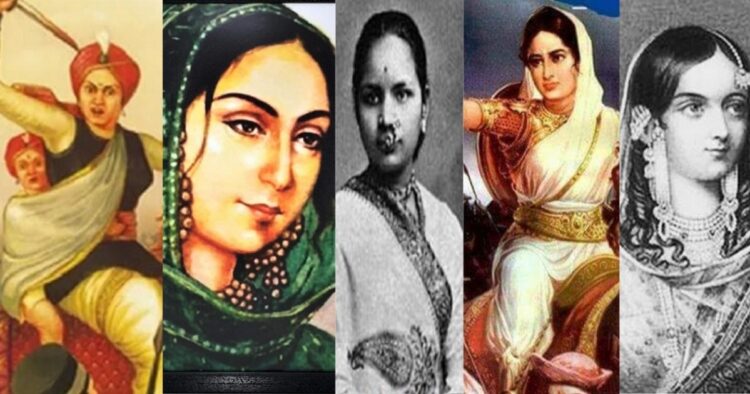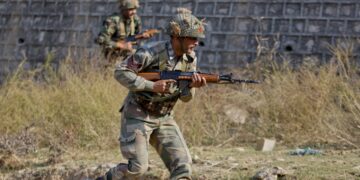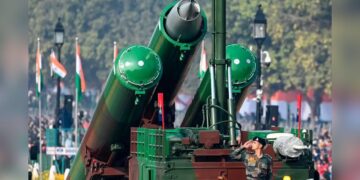The festival of independence is being celebrated with great pomp in India. Indians are immersed in the celebration of independence. After all, we have got this freedom after the hard and long penance of our ancestors. Today is the day to remember those brave sons, revolutionaries and great men. Who sacrificed everything and freed Mother India from the shackles of the British. Today when we are breathing in peace under the open sky. Sowing the seeds of progress. We have reached the Moon and Mars, then all this is the gift of those great freedom fighters. Freedom is the foundation of the world’s largest democracy. And this freedom has been achieved only due to our great heroes. At that time, we suffered unbearable tortures of the British, spent our youth in jails and did not have weapons to fight the British. Still, only Indians had the spirit of not accepting defeat. Every person of India, no matter which sect or religion he belonged to, was united to free the country and fight the British. And the result of this collective strength was that on 15 August 1947 the British had to leave India and go back.
It is not true that only men were leading these freedom fighters. Our brave women were also challenging the British rule by standing shoulder to shoulder with men. They too became warriors in the battlefield and contributed to the freedom struggle to oust the British rule from the country. Let us know about those brave women of Awadh province who participated in the first freedom struggle and made the British face tough times.
Rani LakshmiBai
Who does not know the tale of valour of Jhansi’s Rani Laxmibai? Such a great warrior woman who shook the foundation of British rule on her own. In the first war of independence in 1857, Rani Laxmibai overpowered the British army. Even the British officers were amazed to see her valour. At the age of just 23 years, when girls are at the age of playing and jumping around, Rani Laxmibai fought against the British. Rani Laxmibai was born on 19 November 1828. Her father’s name was Moropant Tambe and mother’s name was Bhagirathi Sapre. Her childhood names were Manu and Chhabili. She was married to Jhansi’s King Gangadhar Rao Newalkar. But after a few years the king died, so the British sent their army to capture Jhansi but the queen destroyed the British army. Famous poetess Subhadra Kumari Chauhan has written the poem Jhansi Ki Rani. In which she has given a wonderful description of Rani Laxmibai’s valour.
Jhalkari Bai
Jhalkari Bai is also related to Jhansi. She too had defeated the British army in the first freedom struggle along with Rani Lakshmibai. Let us tell you that Jhalkari Bai lived in Bhojla village near Jhansi fort. People of Jhalkari Bai’s family still live in this village. She was married to a soldier in the queen’s army. After marriage, Jhalkari Bai met Rani Lakshmi Bai during a puja. Rani Lakshmibai was surprised to see Jhalkari Bai, because she looked exactly like Lakshmibai. Lakshmibai included Jhalkari Bai in the Jhansi army. Jhalkari Bai, who was adept in the art of horse riding and weapon handling, started leading Lakshmibai’s female military contingent Durga Dal. After her husband’s death, Jhalkari Bai had vowed that until Jhansi becomes independent, she will not apply vermilion or do any makeup. When the British surrounded the Jhansi fort, Jhalkari Bai fought very bravely. To deceive the British, Jhalkari Bai wore Rani Lakshmi Bai’s clothes and took command of the army. The British did not even know that she was not Rani Lakshmi Bai but Jhalkari Bai. She attacked the British army like a lioness and sacrificed herself.
Begum Hazrat Mahal
Hazrat Mahal, the first Begum of Wajid Ali Shah, the ruler of Awadh, was also at par with Rani Lakshmibai. She too had raised her voice against the British rule in the 1857 revolt. Begum Hazrat Mahal had given a tough time to the British rule with her excellent organisational power and bravery. She was also the first woman to jump into the 1857 revolution. When the British sent Nawab Wajid Ali Shah to Calcutta to live in exile from Awadh, Begum Hazrat Mahal did not let the fire of freedom die out. She herself started leading the army. Begum Hazrat Mahal had persuaded the people of rural areas to fight and raise their voice against the British rule. Historian Tarachand writes that the Begum herself used to ride an elephant and encourage the army in the battlefield. The courage of Begum Hazrat Mahal can be gauged from the fact that she broke into Lord Canning’s security squad to release Wajid Ali Shah who was under house arrest in Matiaburj during the freedom struggle.
Ajijanbai
The great warrior Ajijan Bai lit the torch of revolution in the 1857 rebellion along with Nana Saheb, Tatya Tope, Azimullah Khan, Bala Saheb, Subedar Tika Singh and Shamsuddin Khan. Let us tell you that Ajijan Bai was a dancer by profession. But her only dream was the independence of the country. The revolutionaries won the battle of Bithoor but later lost but Ajijan Bai became immortal. Ajijan Bai used to extract all the secrets from the British on the basis of her beauty and she used to help the revolutionaries by giving them that information. But once Ajijan was caught. Seeing her beauty, the British commander General Havelock offered her to accept her mistake and work with him. But the patriotic Ajijan rejected his offer and asked her to apologize to the Indians and leave the country. On hearing this, Havelock lost his temper and got Ajijan riddled with bullets. Ajijaan Bai is an inscription written in golden letters on the canvas of Indian pride, before which the country bows down.
Usha Mehta
Usha Mehta was one of the youngest participants of the freedom struggle. She was a follower of the Father of the Nation, Mahatma Gandhi. Usha Mehta joined the protest at the age of 8 and shouted slogans of Simon Go Back. After leaving her studies, she completely dedicated herself to the freedom struggle. She even ran a secret ‘Secret Congress Radio’ channel against the British government, and through this, broadcast patriotic speeches and news in the country. For this, she also had to go to jail. In the year 1998, the Government of India honored her with the Padma Vibhushan. A Bollywood film based on her life, Ae Watan Mere Watan, has also been released.
Begum Zeenat Mahal
Begum Zeenat Mahal was the wife of the last Mughal emperor Bahadur Shah Zafar. Zeenat Begum organised freedom fighters in Delhi and surrounding areas and showed her patriotism. Zeenat Mahal kept encouraging the emperor to fight the British. When surrounded from all sides, the Begum advised Bahadur Shah not to surrender to the British but to fight. She had told Bahadur Shah Zafar, “This is not the time to entertain yourself by reciting ghazals, sir! Patriotic soldiers have come from Bithoor with Nana Saheb’s message, today the eyes of the whole of Hindustan are on you, if you let India become a slave, history will never forgive you.”
Haiderbai
Many British officers used to visit the courtesan of Lucknow, Haiderbai, and there they used to discuss plans against the revolutionaries. It is said that Haiderbai, showing her patriotism, had passed on many important information to the revolutionaries and later she too had joined the army of Begum Sahiba. Among the brave women of Awadh who were part of the army of Begum, the names of Asha Devi, Ranveeri Valmiki, Shobha Devi Valmiki, Mahaveeri Devi, Saheja Valmiki, Namkaur, Raj Kaur, Habiba Gurjari Devi, Bhagwani Devi, Bhagwati Devi, Inder Kaur, Kushal Devi and Rahimi Gurjari etc. are also taken with respect. All these women sacrificed their lives for the country while fighting with the British army.
Mastanibai and Mainavati
Mastani Bai of Kanpur also showed her patriotism in the revolt of 1857. Due to her amazing beauty, Mastani Bai would go to the British on the pretext of entertaining them and would get secret information from them and share it with the Peshwa. In this way, every move of the British reached the Peshwa.
At the same time, Nana Saheb’s 17-year-old adopted daughter Mainavati also jumped into the fight against the British government under the protection of her father. After Nana Saheb’s escape from Bithoor, when the British reached there to ask for Nana Saheb’s address, instead of Nana, his daughter Mainavati was present there. The British asked Mainavati for the address but instead of opening her mouth, Mainavati accepted being thrown alive into the fire.
Uda Devi
Uda Devi and her husband Makka Pasi were both posted in the army of Nawab Wajid Ali Shah. Uda Devi was on duty to protect Begum Hazrat Mahal. Uda Devi’s husband Makka Pasi was killed in the battle of Chinhat. Then Uda Devi’s military side awakened. She decided to take revenge for her husband’s death from the British. On 16 November 1857, Uda Devi faced the British army wearing a men’s uniform in Secunderabad. She climbed a peepal tree and from the tree itself, she shot 36 British soldiers one by one at some fixed intervals. When the British fired at the tree, it fell down. Investigation revealed that the soldier was not a man but the great warrior Uda Devi. Even today, her name is taken with great respect in Lucknow. Uda Devi’s statue is installed at the same Secunderbagh intersection.

















Comments